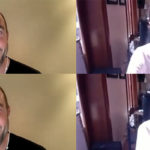Podcast: Download (Duration: 32:25 — 30.0MB)
Get Notified Of Future Episodes Apple Podcasts | Spotify | Amazon Music | Android | Blubrry | Gaana | TuneIn | Deezer | Anghami | RSS | More
James brings back a familiar face, Ilana Wechsler from TeachTraffic.com, to discuss the evolving landscape of digital traffic in 2024.
James acknowledges the dynamic changes in the digital marketing space, which Ilana, wearing dual hats as both an educator and agency owner, is uniquely positioned to observe through her experience and insights gained from client interactions.
In their catchup, they’ll talk about the ad strategies that are effective in light of developments like AI in programmatic advertising.
They’ll talk about the importance of precise ad targeting, and the role of YouTube ad strategy in marketing.
And they’ll discuss how education and strategic guidance can empower business owners to be largely in control of their own ad strategy.
Table of contents
1. The shifting landscape of paid traffic
2. The impact of AI on paid advertising
3. Should you or shouldn’t you hire an agency?
4. Between education and done-for-you
5. When traffic strategy doesn’t work…
6. Where help makes a significant difference
7. The price of learning what to do
8. A journey through Ilana’s intensive program
9. When the client knows what to do
10. Transitioning from agency help
11. The platforms Ilana works with
12. YouTube’s role in advertising
13. Are you sitting on assets you don’t use?
The shifting landscape of paid traffic
Ilana confirms James’s observation – the realm of paid traffic is indeed undergoing significant changes in 2024, largely due to the rapid advancement of AI technology. This evolution is not just reshaping the landscape of digital advertising by removing micro-managing capabilities from the hands of advertisers, but it’s also broadly affecting business operations and job roles across industries.
As AI continues to develop, advertising platforms are moving towards a model where they aim to automate the process of finding customers for businesses simply based on the website and budget provided.
While this vision of automation and ease of use is the goal, Ilana notes that the reality is more nuanced, and the transition to fully automated systems is gradual, with each platform adjusting in its unique way.
This shift towards AI-driven advertising represents a significant disruption in the digital marketing space, affecting how campaigns are managed and optimized.
The impact of AI on paid advertising
James asks if it’s accurate to suggest AI in advertising platforms is elevating novice advertisers by simplifying complex processes, yet potentially limiting advanced advertisers due to the automation of previously controllable features.
Ilana’s response points to the variable impact of AI across different platforms, noting a shift from micro-targeting to a greater emphasis on creative content, especially on social platforms like Facebook and Instagram, whereas Google maintains a balance between data analysis and creativity.
Ilana says AI developments have indeed made advertising platforms more accessible to less experienced advertisers by forgiving technical errors in favor of strong creative ads. This evolution has somewhat leveled the playing field, reducing the gap between sophisticated and novice advertisers, and making digital advertising more inclusive but also challenging for those used to detailed control.
Should you or shouldn’t you hire an agency?
Are businesses better off hiring an advertising agency, or managing their ad campaigns in-house?
Ilana suggests that for those spending less than $10,000 a month on ads, hiring an agency might be an unnecessary expense. She argues that, after initial setup and strategic adjustments, most ad accounts enter a “maintenance mode” where significant changes are less frequent, implying that the high cost of agency management may not be justifiable for smaller ad spends.
Ilana acknowledges the value of agencies for larger advertising budgets or more complex campaigns involving multiple funnels and geographical targets. For small businesses, especially those spending between $5,000 to $10,000, she recommends a more hands-on approach with strategic guidance, which could lead to effective results without the additional costs of an agency.
This strategy allows businesses to allocate what they would have spent on agency fees towards their advertising budgets instead.
Between education and done-for-you
Ilana discusses the crucial difference between relying solely on platforms’ educational resources for managing ad campaigns versus seeking specialized training or guidance, such as her Intensive program. The risk of misalignment in strategy is real, particularly with Google’s Performance Max campaigns, which are not suitable for all advertisers.
It’s important, says Ilana, to set up campaigns correctly from the start, incorporating proper structure and audience signals to ensure success, something that platform guides often overlook. She warns against the DIY approach that follows platform default recommendations without a deep understanding of campaign management nuances, as it can lead to poor performance and frustration.
Ilana advocates for getting educated on the intricacies of digital advertising platforms, whether through her program or others, to avoid the pitfalls of going it alone. This education can significantly increase the likelihood of success and prevent the discouragement that leads businesses to prematurely abandon their advertising efforts or unnecessarily outsource them.
When traffic strategy doesn’t work…
James and Ilana discuss a common cycle in the paid traffic world where businesses hire help, don’t achieve desired results, deplete their budgets, and then give up entirely on advertising. This cycle often leaves them disillusioned, questioning how competitors succeed where they have failed.
Ilana suggests a hybrid model as a solution, where she provides guidance on what actions to take and avoid, coupled with data analysis and minor adjustments by her team. This approach not only fosters learning and self-management but also keeps businesses engaged and empowered to handle their traffic strategies in-house.
James recalls Peter Drucker’s wisdom of doing the right things, underscoring that having guidance to do the right things is crucial, whether from an agency or through educational programs.
Ilana’s model aims to provide such guidance, especially beneficial for those spending a moderate amount on ads. This support system ensures businesses are not only executing strategies properly but also adapting as needed, offering a more sustainable and insightful approach to managing paid traffic and potentially improving return on investment.
Where help makes a significant difference
James speaks of the challenges faced when managing Facebook ads. Ads, for instance, may be running successfully, then suddenly be declined without clear reason. He stresses the importance of understanding platform nuances to avoid account suspension, a lesson learned from his own experience of being banned from Facebook advertising for years.
This highlights the value of expert guidance in navigating the complex and sometimes arbitrary rules of digital advertising platforms.
Ilana agrees, illustrating her point with a client case where she first focused on improving the client’s website to better capture and convert traffic before starting any ad campaigns. This underscores the importance of a solid foundation in conversion optimization before amplifying traffic. A strategic review can reveal critical adjustments that significantly boost performance without necessarily increasing ad spend.
In another client scenario, within the financial services sector, altering the call to action from a direct sale to booking a free introductory call made a substantial difference in campaign success.
This strategy of adjusting tactics based on the business model demonstrates the tailored approach needed for different industries and objectives, from e-commerce to professional services.
The price of learning what to do
How much does help like Ilana’s cost? The base level is priced at $199 per month, providing comprehensive course content and direct access to Ilana for guidance. For those seeking more intensive, personalized assistance, there’s a higher tier at $799 per month, which includes weekly Zoom meetings for in-depth review of ad accounts and strategy adjustments, backed by Ilana’s extensive experience in paid traffic across various niches.
The intensive program is designed to offer participants not just education but a nuanced understanding of their specific business challenges and opportunities in paid traffic. It functions like a consultancy, with the added benefit of being part of a learning community. The program aims to provide significant value, particularly for businesses where the customer lifetime value justifies the investment in advertising education and strategy refinement.
Ilana suggests that the ROI for joining her program depends on the value of a client to the business, indicating that the more a client is worth, the more justifiable the expense. This model assumes that even minor improvements in ad strategy or execution, facilitated by her guidance, can lead to substantial returns, especially for products or services with high customer value.
A journey through Ilana’s intensive program
Ilana describes the evolution of a client’s journey within her Intensive program, highlighting the transition from initial challenges to achieving a self-sustaining advertising strategy. Initially, the client faced significant struggles, including lost organic rankings and a desperate need for leads to maintain their sales force. Through Ilana’s guidance, the client’s advertising efforts didn’t immediately excel but gradually improved through strategic adjustments. Over a year later, their campaigns are largely self-managing, requiring only occasional tweaks and benefiting from Ilana’s expertise when new opportunities or challenges arise.
This process underscores the program’s value not just in immediate problem-solving but in fostering an environment where clients gain the confidence and skills to manage their campaigns with minimal intervention. Clients learn to make informed decisions about their advertising strategies, including budget allocations and targeting adjustments, ensuring their marketing efforts continue to support their business effectively without constant oversight.
James reflects on the paradox of providing such a service: the ultimate success of a mentor or consultant is to render their role seemingly unnecessary because their client’s operations run smoothly without them. This outcome signifies not the diminishing need for the mentor but the achievement of the goal to empower the client fully.
This philosophy mirrors Ilana’s approach with her Intensive program, aiming to equip clients with the knowledge and tools they need to independently manage their paid traffic campaigns successfully.
When the client knows what to do
Ilana explains that her client’s ability to identify necessary adjustments in their paid traffic campaigns, like adding negative keywords and modifying budgets, is a result of the education and training they’ve received over time. This empowerment allows the client to actively participate in the optimization process, understanding the strategic moves needed to maintain campaign efficiency without having to manage every detail personally.
The client’s involvement in directing specific changes, while relying on Ilana’s team for execution, shows a collaborative approach where the client retains control over their campaigns’ strategic direction. This balance minimizes the client’s workload in managing the campaigns directly, allowing them to focus on broader business needs while ensuring that their advertising efforts are finely tuned to their specific requirements.
Transitioning from agency help
James asks whether Ilana’s Intensive program could serve as a transitional support for clients moving away from agency services, especially once the foundational campaign work is completed but the client still needs strategic guidance. Ilana affirms, noting that clients often feel abandoned by agencies focused on acquiring new business, leaving them hesitant to make changes independently for fear of disrupting their campaigns’ success.
This scenario points to the value of having expert support to navigate such transitions, ensuring clients can maintain and optimize their campaigns confidently.
Ilana also reiterates the risks associated with direct advice from platforms like Google, which may not always align with the client’s best interests. In one instance, for example, a client was advised to launch a Performance Max Campaign without understanding its broader impact.
This shows the need for a knowledgeable advisor to help recognize beneficial strategies from potentially harmful ones.
The platforms Ilana works with
Ilana devotes her focus primarily to Google, due largely to the nature of the businesses she assists, which align well with Google’s advertising capabilities. She points to Google’s stability and transparency in showing where ads appear, contrasting this with the unpredictability of Facebook advertising, which she compares to a roller coaster ride.
Ilana appreciates Google as an ideal platform for testing and reaching target audiences with precision, highlighting its suitability for businesses aiming to connect with users based on specific search intents. This preference is rooted in her background as a data analyst, though she acknowledges that platforms like Meta also have their significant roles in the digital advertising ecosystem.
YouTube’s role in advertising
Where does YouTube come in, seeing as it’s owned by Google?
Ilana acknowledges YouTube’s unique position in the advertising space. It has both challenges and strategic opportunities for building retargeting audiences.
Ilana points out that while YouTube, as part of the Google ecosystem, offers powerful tools for advertisers, the removal of certain micro-targeting options has made it a complex platform to master, especially for local businesses and specific professional services.
Despite these challenges, Ilana utilizes YouTube to develop targeted audiences by creating content that engages viewers, which can then inform dynamic search campaigns within Google Ads. This allows for a sophisticated strategy where interested viewers are retargeted with more specific ads based on their interaction with YouTube content. The platform basically leverages their demonstrated interest to tailor advertising efforts more effectively.
James and Ilana discuss the potential of using YouTube viewership as a direct funnel for targeted advertising on Google. Take, for instance, a recent video of James about hiring virtual assistants. He could, in theory, run a campaign for viewers of the video, putting an ad on Google specifically for them, with a CTA for the recruitment agency he co-owns.
Are you sitting on assets you don’t use?
James prompts listeners to evaluate whether they are fully using their marketing assets. Many, he suggests, might not be aware of the strategies and tools available for enhancing their advertising efforts. He emphasizes the transformative potential of education in digital marketing, particularly for businesses that may not have optimized their campaign strategies to target specific audience segments effectively.
Ilana stresses the importance of targeted advertising, cautioning against broad strategies that fail to focus on the intended audience. She highlights the risk of inadvertently extending campaigns beyond the desired demographic, which could dilute the effectiveness of marketing efforts.
Precision in targeting, says Ilana, remains crucial despite platforms limiting specific tools for advertisers.
Concluding, Ilana remains optimistic about navigating platform constraints, committed to adapting strategies within the evolving digital advertising landscape.
For those interested, Ilana’s TeachTraffic.com program, promises a tailored approach to leverage existing assets and optimize campaign performance.
Enjoyed the show? Leave us a review on iTunes












Leave a Reply